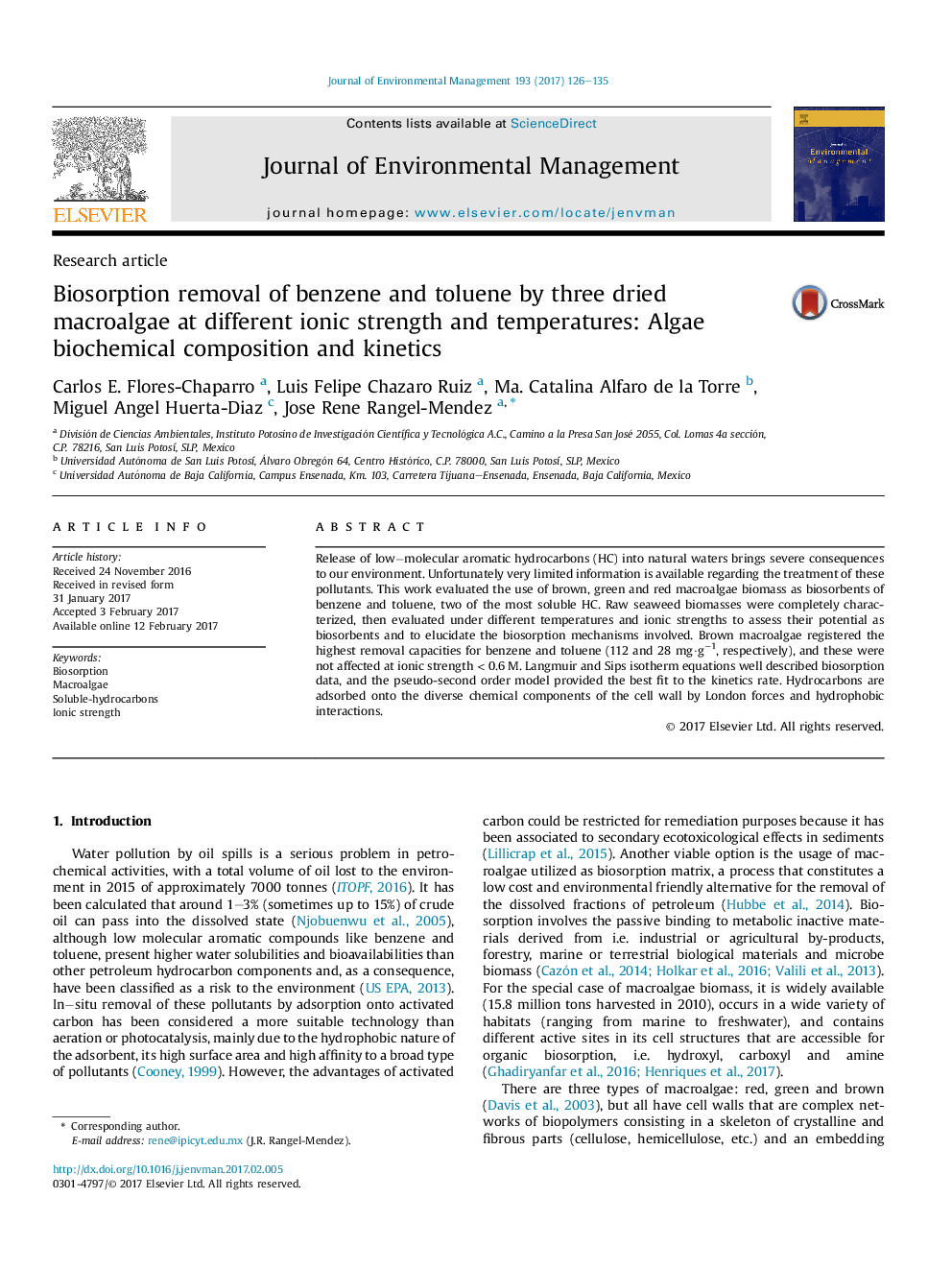| Article ID | Journal | Published Year | Pages | File Type |
|---|---|---|---|---|
| 5116817 | Journal of Environmental Management | 2017 | 10 Pages |
â¢The biosorbents surface charge does not change with ionic strength.â¢The hydrocarbons affinities were not affected at least up to I = 0.6 M.â¢The macroalgae main constituents are carbohydrates, lignin and proteins.â¢The hydrocarbon biosorption and biodesorption capacity increased with temperature.â¢Benzene and toluene are adsorbed by London forces and hydrophobic interactions.
Release of lowâmolecular aromatic hydrocarbons (HC) into natural waters brings severe consequences to our environment. Unfortunately very limited information is available regarding the treatment of these pollutants. This work evaluated the use of brown, green and red macroalgae biomass as biosorbents of benzene and toluene, two of the most soluble HC. Raw seaweed biomasses were completely characterized, then evaluated under different temperatures and ionic strengths to assess their potential as biosorbents and to elucidate the biosorption mechanisms involved. Brown macroalgae registered the highest removal capacities for benzene and toluene (112 and 28 mg·gâ1, respectively), and these were not affected at ionic strength < 0.6 M. Langmuir and Sips isotherm equations well described biosorption data, and the pseudo-second order model provided the best fit to the kinetics rate. Hydrocarbons are adsorbed onto the diverse chemical components of the cell wall by London forces and hydrophobic interactions.
Graphical abstractDownload high-res image (406KB)Download full-size image
